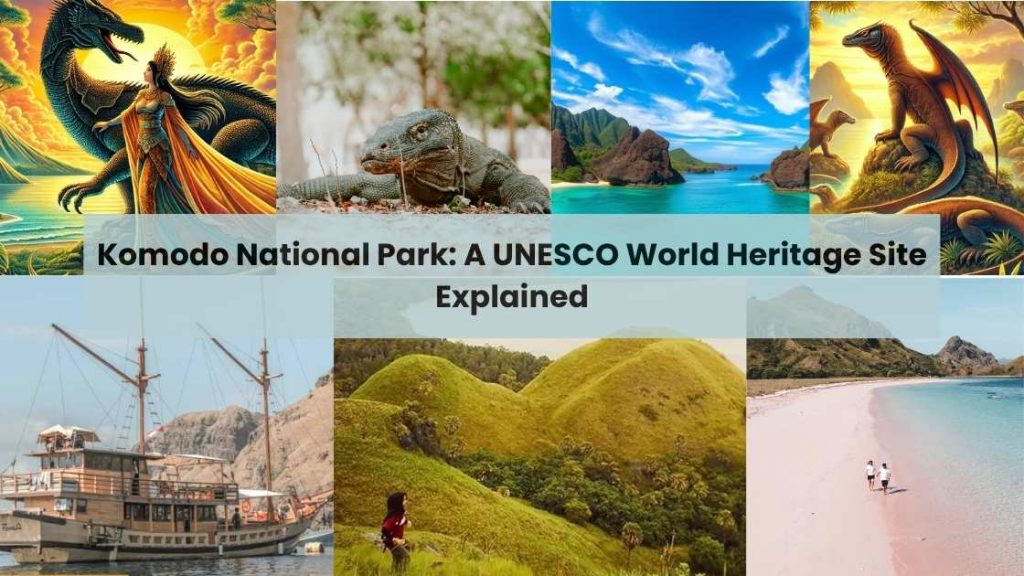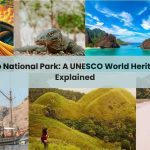Indonesia is home to some of the world’s most spectacular natural wonders, but few are as captivating as Komodo National Park. Recognized globally for its rare wildlife, striking landscapes, and thriving marine biodiversity, this park is one of Southeast Asia’s crown jewels. Whether you’re planning a Komodo island trip, a Komodo boat trip, or an adventurous Komodo dragon tour, the experience offers an unforgettable mix of exploration, culture, and conservation.
The Story Behind Komodo National Park
Established in 1980, Komodo National Park was originally founded to protect the endangered Komodo dragon (Varanus komodoensis), the largest living lizard on the planet. However, as conservation understanding grew, the park’s mission expanded to include the protection of the area’s rich terrestrial and marine ecosystems.
In 1991, UNESCO designated Komodo National Park as a World Heritage Site and a Man and the Biosphere Reserve, recognizing its extraordinary biodiversity and ecological significance. Covering over 1,800 square kilometers, the park comprises three major islands — Komodo, Rinca, and Padar — and numerous smaller islets surrounded by the vibrant waters of the Flores Sea.
The park represents a perfect blend of raw natural beauty, evolutionary wonder, and successful conservation. Its landscapes range from savannah-covered hills to mangrove forests, coral reefs, and white-sand beaches — each contributing to the park’s global ecological importance.
The Komodo Dragon: King of the Island

The undisputed star of any Komodo tour is the Komodo dragon itself. These ancient reptiles, sometimes referred to as “living dinosaurs,” can grow up to three meters long and weigh more than 70 kilograms. Their powerful tails, sharp claws, and venomous bites make them formidable predators in the wild.
Visitors can see Komodo dragons on both Komodo and Rinca Islands, guided by park rangers who ensure safety and help explain the dragons’ fascinating behaviors. Watching these massive creatures roam freely in their natural habitat is an awe-inspiring experience — one that feels like stepping back into prehistoric times.
But Komodo dragons are not just tourist attractions; they’re a vital part of the island’s ecosystem. As apex predators, they help control prey populations and maintain ecological balance. Conservation programs in the park have been crucial in stabilizing their numbers, protecting nesting grounds, and preventing illegal poaching.
The Unique Ecosystem of Komodo National Park

Komodo National Park is not only about dragons. It’s a living laboratory of evolution and biodiversity, both on land and beneath the sea.
The islands are characterized by savannah grasslands, thorny forests, and coastal vegetation, home to wild boars, Timor deer, monkeys, and various species of birds and reptiles. The dry, arid climate gives the islands a dramatic, almost otherworldly appearance.
Beneath the waves, however, lies an entirely different world. The marine area of Komodo National Park belongs to the Coral Triangle, the world’s richest marine ecosystem. Here, over 1,000 species of fish, 260 species of coral, and 70 types of sponges thrive, along with manta rays, sea turtles, reef sharks, and dolphins. For divers and snorkelers, the park is nothing short of paradise.
Exploring the Park: Top Activities and Experiences

A Komodo island trip offers something for every traveler — from wildlife enthusiasts to photographers, divers, and explorers. Here are some of the best things to do while visiting Komodo National Park:
1. Komodo Dragon Tour

The main highlight of any Komodo tour is visiting Komodo or Rinca Island to spot the dragons. Guided treks range from easy walks to longer routes that take you deep into the dragons’ territory. Along the way, you may also encounter deer, water buffalo, and tropical birds.
2. Komodo Boat Trip
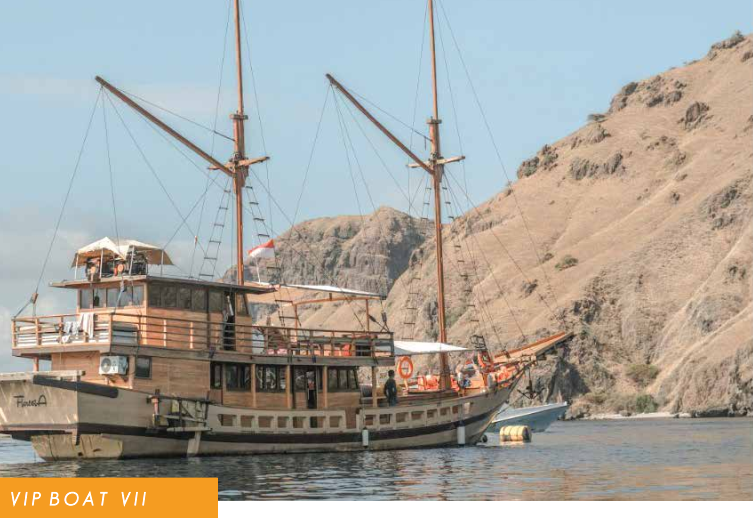
The best way to explore Komodo National Park is by sea. A Komodo boat trip allows travelers to sail across turquoise waters, hopping between islands and hidden coves. Many tours use traditional phinisi boats — elegant wooden vessels inspired by Indonesia’s maritime heritage. You can choose a day trip or a multi-day liveaboard experience, complete with snorkeling, diving, and island exploration.
3. Padar Island Trek
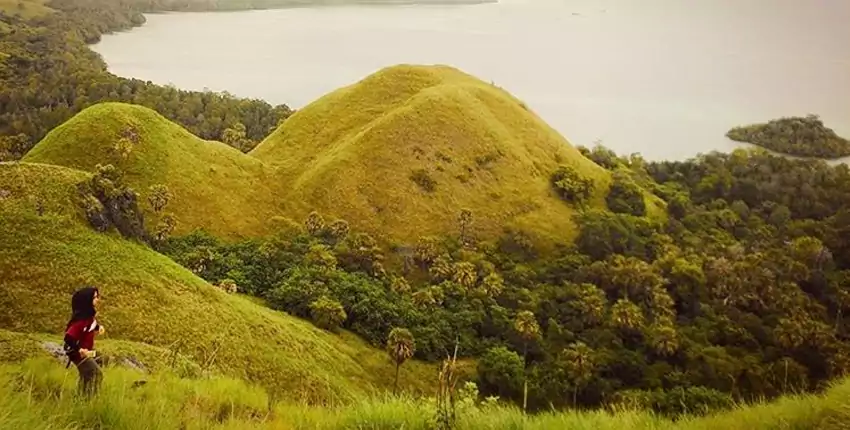
Padar Island is one of the park’s most photographed locations. A short but steep hike leads to an incredible panoramic viewpoint overlooking three crescent-shaped beaches, each with different colored sand — white, black, and pink. The view at sunrise or sunset is breathtaking and a must-see during any Komodo island trip.
4. Diving and Snorkeling Adventures
Komodo National Park is often ranked among the world’s top diving destinations. Dive sites such as Batu Bolong, Castle Rock, and Manta Point offer exhilarating encounters with rich marine life. Even for non-divers, snorkeling around Kanawa or Siaba Besar Island provides a window into the park’s colorful underwater world.
5. Relax on Pink Beach
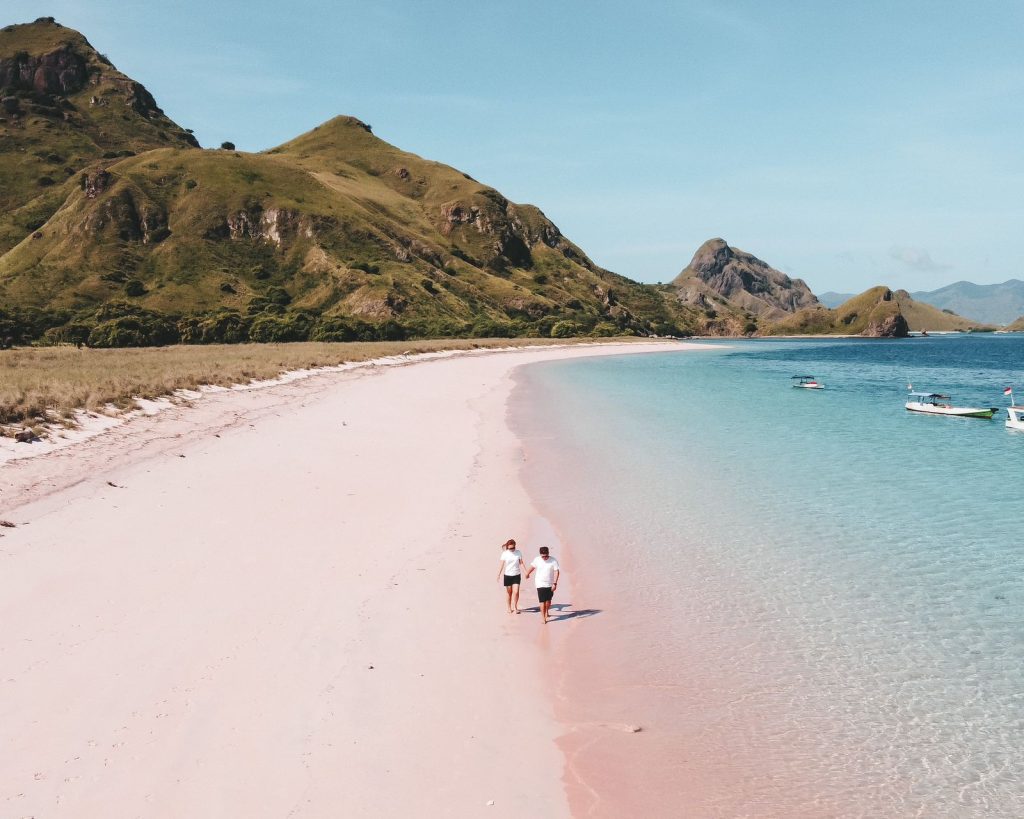
One of only a handful of pink-sand beaches on Earth, Pink Beach is a natural marvel created by red coral fragments blending with white sand. It’s an ideal spot to unwind, swim, or snorkel in calm, crystal-clear waters.
Conservation Efforts and Sustainable Tourism
As Komodo National Park attracts increasing numbers of tourists, maintaining its ecological balance has become a priority. UNESCO’s designation has played a key role in ensuring the park’s sustainable management.
The Indonesian government, along with conservation organizations, has implemented strict visitor regulations, including limited access zones, ranger-guided tours, and eco-friendly tourism initiatives.
Tour operators now emphasize eco-conscious Komodo tours, using solar-powered boats, banning single-use plastics, and promoting local products. Travelers are encouraged to follow “leave no trace” principles and respect wildlife at all times.
The revenue from entrance fees and guided tours also contributes directly to conservation efforts and supports the local communities that depend on the park’s resources.
The Role of Local Communities
The human element of Komodo National Park is equally important. Indigenous communities have lived in and around the islands for centuries, harmoniously coexisting with the dragons and the natural environment. Many locals now work as park rangers, boat operators, and tour guides, helping protect the park while sharing their cultural heritage with visitors.
By joining a Komodo boat trip or tour led by locals, travelers not only gain authentic insights but also contribute to the local economy, promoting sustainable livelihoods.
When Is the Best Time to Visit Komodo National Park?
The best time for a Komodo island trip is during the dry season, from April to December, when the weather is warm and sunny, and the seas are calm for sailing and diving.
If you’re keen to observe Komodo dragons, visit between May and August, when they’re most active. The wet season (January to March) brings lush green scenery, but strong winds and high waves can affect boat travel.
Getting There
Most travelers start their Komodo tour from Labuan Bajo, a coastal town on the western tip of Flores Island. Labuan Bajo is accessible via daily flights from Bali, Jakarta, and Surabaya. From there, a short boat ride — ranging from one hour to several days depending on your chosen itinerary — takes you into the heart of Komodo National Park.
Why Komodo National Park Deserves a Spot on Your Bucket List
Komodo National Park isn’t just another travel destination — it’s a living testament to the power of conservation, evolution, and natural beauty. From witnessing prehistoric dragons to diving among kaleidoscopic reefs and sailing through dramatic island landscapes, every moment spent here is unforgettable.
A Komodo island trip offers not just adventure but also a deeper appreciation of the delicate balance between humans and nature. By traveling responsibly and supporting conservation efforts, visitors ensure that this UNESCO World Heritage Site remains a thriving sanctuary for generations to come.


